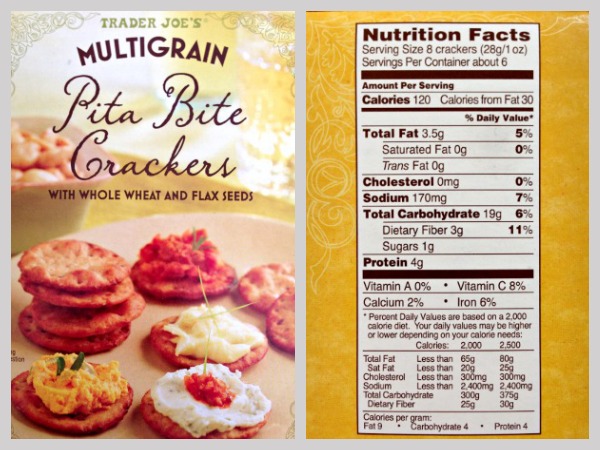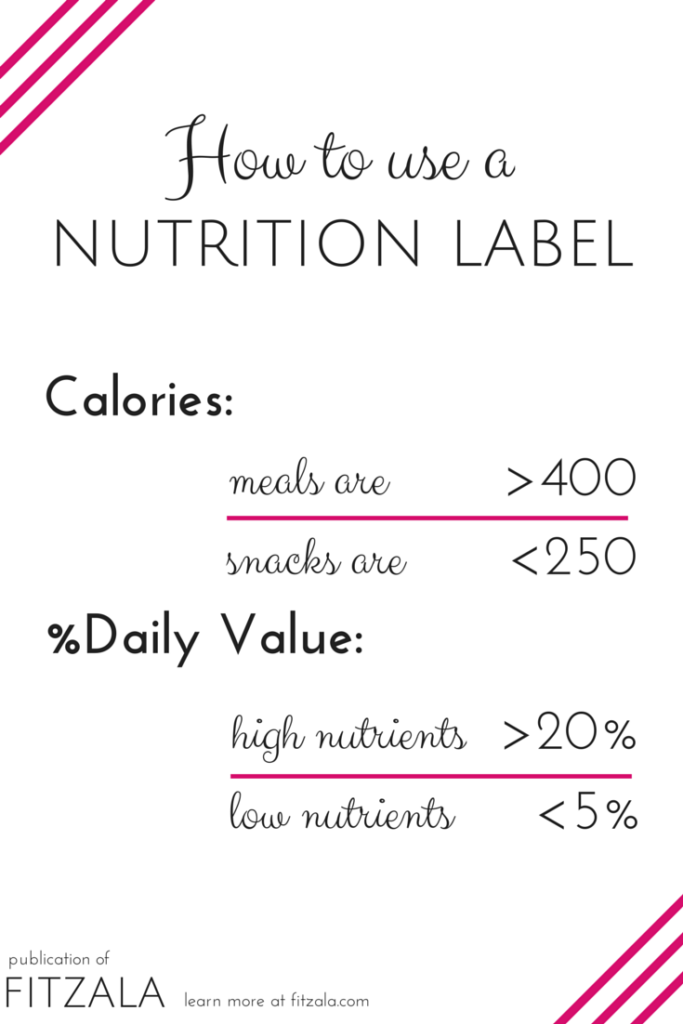Making informed decisions about your food purchases is critical for your overall health. Fortunately, more and more people are beginning to read labels before buying food. When you’re shopping, it’s not always easy to take the time to really evaluate how healthful a food is. Luckily, there’s a few tips that you can learn to make the process easier. We’re going to look at how to understand a nutrition facts label as well as how to use a nutrition facts label.
The Nutrition Facts Label – an overview
The FDA is responsible for ensuring that all food sold in the United States is safe and accurately labeled. This is why all labels are similarly formatted to make it easier for the consumer to compare and read across products. Information is displayed about the serving size, total servings, grams of fat, cholesterol, sodium, carbohydrates, fiber, sugar, and protein, as well as daily value percentages.
Serving Size
The best and first place to start is the serving size.
All serving sizes are a unit of measurement, not the recommended consumption amount.
This is important to remember when you’re buying food. The nutrition information applies for one serving of the package. Usually this is in a familiar unit of measurement, like cups, pieces, or tablespoons. This is FDA mandated so that it’s easier to compare across products.
Most packages contain more than one serving, which means that you might be eating more than you think.
Before buying the product, ask yourself how much you would eat? How many crackers are in a handful? How many handfuls do you usually eat before you are satisfied? Think about how much you are consuming and evaluate whether the nutrition information for your consumption amount is healthy.
Calories
Calories come second on the label because it’s one of the most critical pieces to weight management.
Calories tell you how much energy you get from the product.
The more calories, the more energy-dense the product is. Most Americans eat more calories than they need yet don’t meet the recommended amounts of nutrients.
Any product with more than 400 calories is considered high. As a general rule, you want snacks to be 250 calories or less and meals to be in the range of 400 calories.
Of course this all depends on your individual needs. Typically, short people need less food than tall people. It’s a good idea to understand approximately how many calories you need per day to maintain your weight.
Nutrients
Just under the calories, the next part of the nutrition label gives you information about food nutrients. This includes
- Fat
- Saturated fat
- Cholesterol
- Sodium
- Carbohydrates
- Fiber
- Sugar
- Protein
- Vitamin A, C
- Calcium
- Iron
The FDA recommends to limit the intake of fat, saturated fat, trans fat, cholesterol and sodium.
Most people don’t get enough Vitamin D, Calcium, Potassium and Iron, which is why they appear on the nutrition label. Choose foods that have a higher daily value percentage (explained below) to get more of these nutrients.
% Daily Value
The percent daily value shows what nutrients that food satisfies for a 2,000 calorie diet. This can be confusing for a lot of people.
It’s helpful to think % DV as a tool to interpret the absolute numbers (grams and milligrams) by placing them on the same scale for the day.
Not everyone knows what 24 grams of fat means, but it’s easier to understand if you understand that it accounts for 36% of your fat for the day.
Even if you eat more or less than 2,000 calories per day, the %DV will help you understand what nutrients the food is high or low in. From there, you can approximate your nutrient intake.
As a general guide, any DV that is 5% or less is low and any DV greater than 20% is high.
Choose foods that have higher percent DVs for nutrients like Vitamin D, Potassium, Calcium and Iron. Generally, you should choose foods with lower percent DVs for saturated fat, cholesterol and sodium.
You can also compare the percent DV across similar products. Make sure the serving sizes, especially the weight, are similar before comparing the nutrient values.
Percent daily value can also be used to confirm product claims. If something claims to be “low-fat”, you can look at the percent DV to see how much fat it actually contributes to your diet.
How to apply this in daily life
Let’s take a look at a real nutrition label and judge for ourselves whether it is a healthy option or not.
Here are some crackers from Trader Joe’s. From the cover, they look relatively healthy with ingredient claims like “multigrain”, “whole wheat”, and “flax seed”.

The label looks pretty inconspicuous. There are 3.5 grams of total fat, which represents 5% of your daily value of fat intake if you were eating 2,000 calories. There are zero grams of saturated fat, trans fat, and cholesterol, which is good for any processed food. Sodium isn’t considered high, since it’s less than 20%. But good nutrients like Vitamin A, C, Calcium and Iron aren’t high either.
This product isn’t high in nutrients, but it’s not very low either. These crackers won’t significantly help you get your recommended daily nutrient intakes but it won’t hinder you.
Take a look at the real-life serving size above. Will you eat only eight crackers? Crackers are not very filling, which means that you are likely to eat more than the serving size.
When you buy a packaged food, you don’t really know what it’s made of. The nutrition facts label helps to combat this by providing a reference point in your decision making.
Most nutrient dense, good for you food products won’t come with a label. Fruits, vegetables, and most meats don’t come with nutrition facts printed on the packaging.
If really you want to keep tabs on your nutrient intake, use a food tracker like MyFitnessPal or CalorieCount. This will be the most accurate way to ensure that you get all of your necessary nutrients for your bodyweight.
And since I want to help you make informed decisions, here’s a nutrition label cheat sheet that you can save to your phone and take with you the next time you’re shopping.

